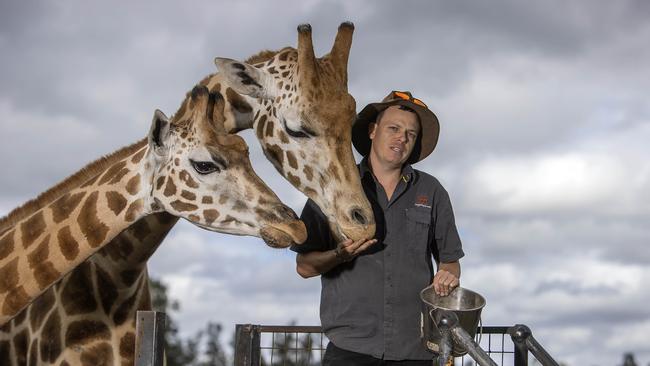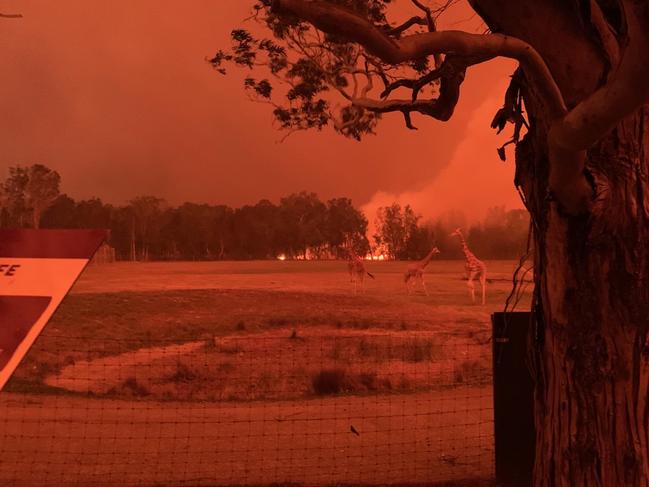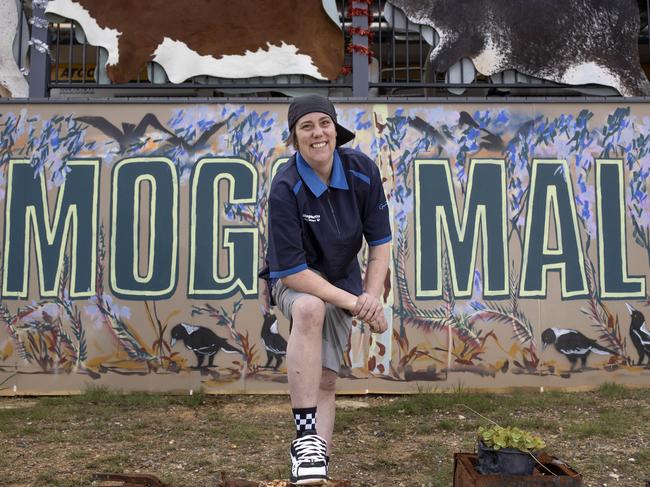Mogo Zoo rallies after Black Summer horrors
One year after Mogo’s zookeepers became makeshift firefighters, thick smoke and red skies have been replaced with clean air and an overflowing car park.

One year after Mogo’s zookeepers became makeshift firefighters, using fire extinguishers, hessian bags and two Land Cruisers with water tanks to battle a raging bushfire, thick smoke and red skies have been replaced with clean air and an overflowing car park.
Cody Wentzel, senior lead keeper of carnivores and ungulates, vividly recalls the events of New Year’s Eve 2019. He was one of about 15 staff who arrived at the zoo by 7.30am after receiving a text message to evacuate to the beach.
The team spent hours watering garden beds, fences and any piece of wood that could act as kindling, then transported some of the most vulnerable animals that looked as though they would be impacted by the fire first, such as the red pandas, to zoo director Chad Staples’s house on zoo grounds.

Lions, tigers, gorillas and bigger animals were moved into their night dens.
“It went black about midday, that was when the zoo was hit,” Mr Wentzel said. “You couldn’t see your hand in front of your face. At that time, I was in the zebra paddock with the vehicle and that’s where we really saw hot embers flying through the sky and landing on to the paddocks and along the fence lines.
“I didn’t have time to think ‘Are we going to make it?’. We didn’t stop for a couple of days because obviously it was still hot … you couldn’t even put your hand on the ground.
“With trees on fire, all the roots were still hot and in flames. We had to make sure that didn’t create another spot fire.”
Mr Staples said the day of the fire was horrific but what followed became a logistical nightmare that lasted much longer. The zoo lost power, roads were closed and food had to be brought in for the animals and humans. “It was two disasters in one,” he said.
The recovery and clean-up took two months, with the doors reopening in March for four weeks before the COVID-19 pandemic hit. The zoo was then forced to shut its doors for another two months after just started returning to normal.

“It was almost like that one-two punch you receive,” Mr Staples said.
The survival of Mogo Wildlife Park was a rare good news story during the horrific Black Summer and gained international attention. For more than six months, visitors have been able to return to the zoo, with many first-timers wanting to show their support.
The Christmas holiday period has proven busier than normal.
“It’s certainly busier and felt great,” Mr Staples said.
“It used to be my absolute favourite time of the day was closing. You could walk around the park, go and see a bunch of the animals I really love myself. You have quiet moments with all of them.
“It became horrible to do so when it was empty.
“There’s something so nice about having that positive energy back when people and animals are enjoying each other’s company.”
While the zoo’s animals were safe, those outside its perimeter were not so lucky.
Mogo resident Jet Murdoch, whose family is still trying to rebuild their home after it was destroyed in the fires, has spent a large part of the past year travelling from the small town of Nelligen to the Victorian border to rescue wildlife and farm animals and checking on some very isolated people.
“Even if it’s just dropping off a six-pack of beer with a couple of bales of hay to a farmer who won’t talk about their problems, that’s all they need, just to know someone’s on their side,” she said.




To join the conversation, please log in. Don't have an account? Register
Join the conversation, you are commenting as Logout